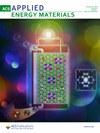Design of multi-epitope vaccine against porcine rotavirus using computational biology and molecular dynamics simulation approaches
IF 5.4
3区 材料科学
Q2 CHEMISTRY, PHYSICAL
引用次数: 0
Abstract
Porcine Rotavirus (PoRV) is a significant pathogen affecting swine-rearing regions globally, presenting a substantial threat to the economic development of the livestock sector. At present, no specific pharmaceuticals are available for this disease, and treatment options remain exceedingly limited. This study seeks to design a multi-epitope peptide vaccine for PoRV employing bioinformatics approaches to robustly activate T-cell and B-cell immune responses. Two antigenic proteins, VP7 and VP8*, were selected from PoRV, and potential immunogenic T-cell and B-cell epitopes were predicted using immunoinformatic tools. These epitopes were further screened according to non-toxicity, antigenicity, non-allergenicity, and immunogenicity criteria. The selected epitopes were linked with linkers to form a novel multi-epitope vaccine construct, with the PADRE sequence (AKFVAAWTLKAAA) and RS09 peptide attached at the N-terminus of the designed peptide chain to enhance the vaccine’s antigenicity. Protein-protein docking of the vaccine constructs with toll-like receptors (TLR3 and TLR4) was conducted using computational methods, with the lowest energy docking results selected as the optimal predictive model. Subsequently, molecular dynamics (MD) simulation methods were employed to assess the stability of the protein vaccine constructs and TLR3 and TLR4 receptors. The results indicated that the vaccine-TLR3 and vaccine-TLR4 docking models remained stable throughout the simulation period. Additionally, the C-IMMSIM tool was utilized to determine the immunogenic triggering capability of the vaccine protein, demonstrating that the constructed vaccine protein could induce both cell-mediated and humoral immune responses, thereby playing a role in eliciting host immune responses. In conclusion, this study successfully constructed a multi-epitope vaccine against PoRV and validated the stability and efficacy of the vaccine through computational analysis. However, as the study is purely computational, experimental evaluation is required to validate the safety and immunogenicity of the newly constructed vaccine protein.利用计算生物学和分子动力学模拟方法设计猪轮状病毒多表位疫苗
猪轮状病毒(PoRV)是影响全球养猪地区的一种重要病原体,对畜牧业的经济发展构成重大威胁。目前,还没有针对这种疾病的特效药物,治疗方案仍然极为有限。本研究试图利用生物信息学方法设计一种多表位肽疫苗,以强力激活 T 细胞和 B 细胞免疫反应。研究人员从 PoRV 中选取了两个抗原蛋白 VP7 和 VP8*,并使用免疫形式化工具预测了潜在的免疫原性 T 细胞和 B 细胞表位。根据无毒性、抗原性、非致敏性和免疫原性标准进一步筛选了这些表位。将筛选出的表位与连接体连接起来,形成一种新型的多表位疫苗结构,在设计的肽链的 N 端连接 PADRE 序列(AKFVAAWTLKAAA)和 RS09 肽,以增强疫苗的抗原性。利用计算方法对疫苗构建体与收费样受体(TLR3 和 TLR4)进行了蛋白质-蛋白质对接,并选择能量最低的对接结果作为最佳预测模型。随后,采用分子动力学(MD)模拟方法评估了蛋白质疫苗构建体与 TLR3 和 TLR4 受体的稳定性。结果表明,疫苗-TLR3 和疫苗-TLR4 对接模型在整个模拟期间保持稳定。此外,还利用 C-IMMSIM 工具确定了疫苗蛋白的免疫原性触发能力,证明所构建的疫苗蛋白既能诱导细胞介导的免疫反应,也能诱导体液免疫反应,从而在诱导宿主免疫反应方面发挥作用。总之,本研究成功构建了针对 PoRV 的多表位疫苗,并通过计算分析验证了疫苗的稳定性和有效性。然而,由于该研究纯属计算性质,因此还需要进行实验评估,以验证新构建的疫苗蛋白的安全性和免疫原性。
本文章由计算机程序翻译,如有差异,请以英文原文为准。
求助全文
约1分钟内获得全文
求助全文
来源期刊

ACS Applied Energy Materials
Materials Science-Materials Chemistry
CiteScore
10.30
自引率
6.20%
发文量
1368
期刊介绍:
ACS Applied Energy Materials is an interdisciplinary journal publishing original research covering all aspects of materials, engineering, chemistry, physics and biology relevant to energy conversion and storage. The journal is devoted to reports of new and original experimental and theoretical research of an applied nature that integrate knowledge in the areas of materials, engineering, physics, bioscience, and chemistry into important energy applications.
 求助内容:
求助内容: 应助结果提醒方式:
应助结果提醒方式:


